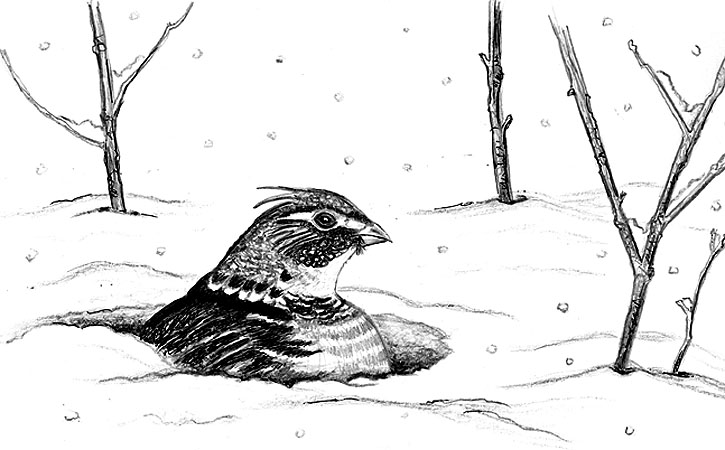
Dear Bird Folks,
After our most recent cold blast, I started wondering why some birds head south in the winter, while others stay back and face the brutal cold. Why don’t they all just leave until things warm up? That’s what I wish I did.
– Jimmy, Hartford, CT
You make a good point, Jim,
It does seem odd that all birds don’t simply leave regions that are subject to such harsh winter conditions. After all, the days are shorter, food is limited and the weather can be deadly. Why not just get out of town until things improve? Of course, with certain species, leaving is their only option. They simply aren’t equipped to handle the cold or their primary food is, for the time being, no longer available. And while there is little doubt that the remaining birds will face significant challenges, migration also has drawbacks. The trip south is filled with risks, problems and uncertainty…kind of like traveling on Spirit Airlines.
Migrating birds have to avoid storms, predators, cell towers and an assortment of other obstacles. For most of these birds this will be their first long-distance flight, and many will be lost along the way. The birds that do arrive safely will be exhausted and in desperate need of food. But too often they find that their ancient wintering grounds have been turned into cattle ranches, coffee plantations or the newest Club Med. They will also have to face hunters, pesticides, snakes and the risk of becoming trampled by the latest caravan.
If all those things weren’t bad enough, the return trip in the spring is just as dangerous, only with an added problem. Climate change is causing trees to bud earlier, flowers to blossom sooner and insects to hatch prematurely. Some returning migrants are discovering that the food they depend upon has already gone by. The hungry birds will have to somehow find the energy to stake out a territory, find a mate, fend off rivals and raise a family. Meanwhile, the birds that remained here all winter are fairly rested, have already picked out choice breeding territories and have been able to take advantage of any premature food supplies …if they’ve survived the winter.
Even though the perils of migration are many, remaining in the north is just as hazardous. When we had those super-cold nights a few weeks back, it seemed impossible for anything, especially a little bird, to survive. But come sunup, they were back (at least most of them), feeding at the feeders or scrounging for food in the bushes. How were the birds able to make it through the night? Did they all crawl into a birdhouse someplace? Surprisingly, very few birds take shelter inside tree cavities or old birdhouses. For the most part, only bluebirds, wrens, woodpeckers and other cavity nesters go inside to get out of the cold. The rest of the birds sleep under the stars, regardless of the weather. This is shocking to me. If I were a bird, I would climb into the first hole I found. But most birds aren’t comfortable in enclosed places. Instead, they use dense foliage or shrubbery for protection, sometimes huddling with others of their species to share warmth. But huddling is not the only trick birds use in the winter. Here are a few more, with one that I’m surprised more birds don’t try.
When we get cold, we simply add another layer of clothing; but birds can’t do that. Instead, they fluff up their feathers in an effort to trap body heat. During those subzero days last week, the chickadees in my yard were fat and fluffy, looking like tiny Pomeranians, but without the vet bills. Birds are warm blooded, but unlike us, they can actually lower their body temperature. In order to save energy, sleeping birds may drop their body temperature by as much as twenty degrees, which is pretty cold (but not as cold as my feet…according to my wife).
Speaking of cold feet, ducks’ feet can easily handle cold water, but not frigid air temperatures. While looking for birds in the Orleans Town Cove last week, I notice that a large flock of Mallards had left the water and were eating vegetation on the shore. But the ducks weren’t walking or even standing, they were moving about the land on their bellies. In an effort to keep their naked (and wet) feet protected from the cold, the birds kept their feet tucked deep inside their feathers and simply wobbled a bit when they wanted to move. The Mallards looked pretty silly, but I don’t think they even cared. This was no time to be vain.
My favorite winter survival trick belongs to the Ruffed Grouse. Instead of climbing into a tree cavity or hiding in the bushes to keep warm, grouse simply burrow into the snow. Sleeping in a snowbank sounds cold, but it’s actually a warmer place to spend the night when the ambient air temps are subzero. I’m really surprised more bird species don’t make burrows in the snow. Perhaps they are worried about being stepped on, or run over by a snowplow or being peed on by a passing dog.
Whether they stay or go, Jimmy, winter is a tough time for birds. Migrating birds can fall victim to storms and cell towers, while non-migrants must deal with food shortages, the polar vortex and dog pee. None of the choices sound very good, but at least birds have an advantage over us. They have wings, which means that no matter what, they never, ever have to fly on Spirit Airlines. Birds are lucky.